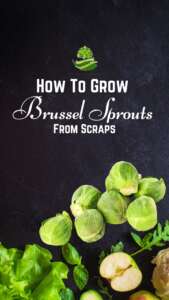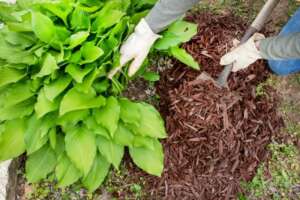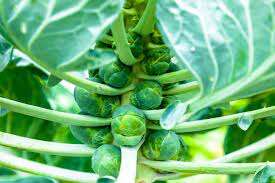Table of Contents
 Do you have some leftover Brussel sprouts in your fridge or are you looking for a new way to use your veggie scraps? Say no more. It’s easy to grow Brussel sprouts, especially with the right guide. So, we provide you with all possible guidelines regarding growing. Brussel Sprouts from Scraps. Stay Connected!!
Do you have some leftover Brussel sprouts in your fridge or are you looking for a new way to use your veggie scraps? Say no more. It’s easy to grow Brussel sprouts, especially with the right guide. So, we provide you with all possible guidelines regarding growing. Brussel Sprouts from Scraps. Stay Connected!!
How to Grow Brussel Sprouts from Scraps – All You Want
Brussel sprouts are mini cabbages, and they’re tasty and nutritious. This is a great kitchen project for anyone with space, time, and love for growing their food. All you need are some bits and pieces of veggies that you wouldn’t otherwise use or be looking to give away.
Brussel Sprout’s nature
Brussel Sprouts are the best vegetable to grow in the garden. They are a very cold hardy vegetable and can be grown as an annual. Brussel Sprouts need to be started indoors, as they take up to four weeks to reach maturity.
Brussel sprouts are the small buds of a larger plant (the Brassica family). They are very hardy, tolerant of cold weather, and easy to grow from scraps.
Easy Process
Growing Brussel sprouts from scraps is an easy process that can be done indoors or out. This plant grows like a boost in full sunlight, but it will tolerate partial shade.
Slashing and Regrowing
Slashing
Slash the stems of your Brussel sprout scraps with a sharp knife. You want to slice the stems about 3/4 inch deep and make cuts that are 1/2 inch apart. This will encourage new growth to develop along the cut stem. If you don’t want to use a knife, you can also use scissors to make small slits through the stem of your Brussel sprout scraps.
Wash Brussels Sprouts and Peel off the Dead Leaves
- Wash your Brussels sprouts. Use a knife to cut off any dead leaves from the bottom of the stem.
- Remove any damaged leaves from the top of the plant if necessary.
Cut off the Bottom of Brussels Sprouts
Cut off stems that are too long or damaged, leaving only one or two at most per plant if they’re healthy enough to support themselves independently.
Fill half of the Container with Water
Fill up the sink or bucket with cold water and add a splash of bleach or disinfectant solution. Ensure that all dirt is removed from the leaves before placing them into the water for cleaning (you can do this by rubbing them gently between two fingers). Rinse well under running water until there is no more dirt left on the surface of each leaf.
Regrowing
Place your Brussel sprout scraps outdoors in a sunny location for about two weeks before transplanting them into larger pots or garden beds. This will give them time to harden off to prepare for transplantation into their new homes outside later down the line.
- Leave the stem 2 inches left after cutting. These will become new roots after planting.
- Fill your container with potting soil and make sure there are no large clumps of dirt. Then place your scraps on top of the soil and bury them under an inch of dirt. Covering the roots will help keep them moist and protected from pests such as rabbits and deer, who may eat the tender young sprouts before they can grow up.
- Place your container in an area that reaches plenty of sunlight and keeps temperatures around 70 degrees F during the day and no colder than 55 degrees Fahrenheit at night.
- After covering your scraps with soil, water thoroughly until you see water coming out through the drainage holes. Keep watering regularly so that your soil stays moist but not wet or muddy. If you notice any wilting or yellowing leaves, give them extra water until those problems clear up.
Transplantation
Planting Between the Time of Late June and Early July?
It depends on where you live; according to the region, several things need to be considered before planting your Brussels sprouts. You need to check the length of the days, the temperature, and the amount of sunlight in your area. Also, it would help if you made sure that there was no frost during this time. If you live in a colder region, it is best to start planting your plants in late June or early July.
Grow the Transplant in Most Sun Exposure
Brussels sprouts grow best when they get full sun exposure. They will not thrive when they are planted in an area shaded by other plants or trees. So make sure that you plant them in an area where they will get maximum sunlight throughout their growing period.
Use Fertile Soil for The Transplantation
The soil needs to be fertile to provide nutrients for the plants as they grow. You can use compost or fertilizer for this purpose.
Plant between 18 Inches To 24 Inches
Brussel sprouts need plenty of room when growing, so make sure that there are about 18 inches between each plant for larger plants and 24 inches for smaller plants. This helps the plants grow more quickly and produce more sprouts per plant than if they were crowded together on top of each other.
Keep Weeds at Distance, Mulch Your Plants with Trimmings or Straw

Mulch your plant with trimmings from other vegetables or straws to keep weeds at bay. Fertilize regularly with fish emulsion or compost tea to encourage growth and keep pests away.
Water regularly
Water regularly but carefully; avoid overwater or drowning your plants. It may cause root rot which can kill your plants.
Coat the Soil with Nitrogen Fertilizer
Brussels sprouts need plenty of nitrogen to grow well, so your soil must be well-fertilized before planting seeds or scraps. Add one pound of ammonium sulphate fertilizer per 100 square feet of garden bed space. So that your plants get plenty of nutrients, they need to grow strong roots and stems and produce delicious buds that are ready to harvest in fall or early winter when temperatures get cooler outside.

Harvesting
You can harvest your Brussel sprouts when they are about 2 inches in diameter and before their outer leaves begin to turn yellow or brown. Harvesting them before they reach maturity will give you smaller crops, but it will also prevent “bolting” (the rapid growth that happens when plants are stressed). You can pull or cut off individual sprouts as needed or cut the entire plant at ground level with a sharp knife.
Final words
This article provides a guide to growing Brussel sprouts from scraps. If you have ever been intimidated by growing Brussel sprouts, this guide is for you. It’s simple and easy to follow, and you will be able to grow delicious Brussel sprouts in no time.

